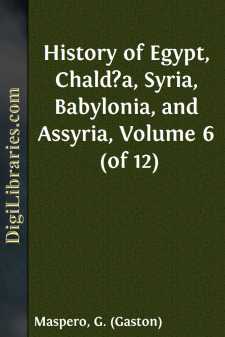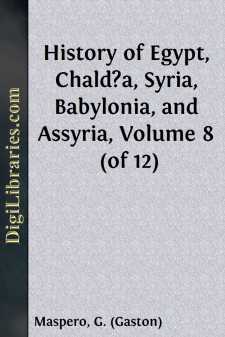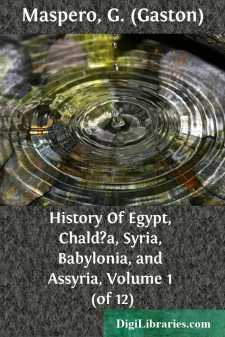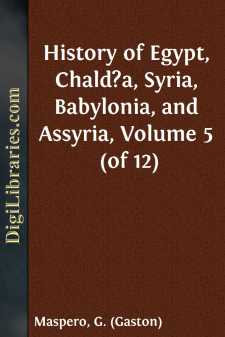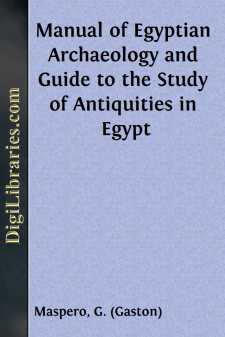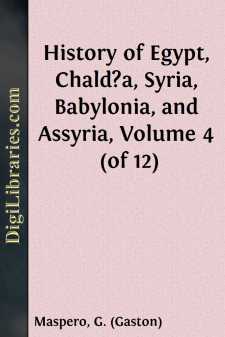Categories
- Antiques & Collectibles 13
- Architecture 36
- Art 48
- Bibles 22
- Biography & Autobiography 813
- Body, Mind & Spirit 141
- Business & Economics 28
- Children's Books 12
- Children's Fiction 9
- Computers 4
- Cooking 94
- Crafts & Hobbies 4
- Drama 346
- Education 46
- Family & Relationships 57
- Fiction 11826
- Games 19
- Gardening 17
- Health & Fitness 34
- History 1377
- House & Home 1
- Humor 147
- Juvenile Fiction 1873
- Juvenile Nonfiction 202
- Language Arts & Disciplines 88
- Law 16
- Literary Collections 686
- Literary Criticism 179
- Mathematics 13
- Medical 41
- Music 40
- Nature 179
- Non-Classifiable 1768
- Performing Arts 7
- Periodicals 1453
- Philosophy 64
- Photography 2
- Poetry 896
- Political Science 203
- Psychology 42
- Reference 154
- Religion 513
- Science 126
- Self-Help 83
- Social Science 81
- Sports & Recreation 34
- Study Aids 3
- Technology & Engineering 59
- Transportation 23
- Travel 463
- True Crime 29
History of Egypt, Chald?a, Syria, Babylonia, and Assyria, Volume 6 (of 12)
Description:
Excerpt
CHAPTER I—THE CLOSE OF THE THEBAN EMPIRE—(continued)
Ramses III.: Manners and Customs—Population—The predominance of Amon and his high priests.
Opposite the Thebes of the living, Khafîtnîbûs, the Thebes of the dead, had gone on increasing in a remarkably rapid manner. It continued to extend in the south-western direction from the heroic period of the XVIIIth dynasty onwards, and all the eminence and valleys were gradually appropriated one after the other for burying-places. At the time of which I am speaking, this region formed an actual town, or rather a chain of villages, each of which was grouped round some building constructed by one or other of the Pharaohs as a funerary chapel. Towards the north, opposite Karnak, they clustered at Drah-abu'l-Neggah around pyramids of the first Theban monarchs, at Qurneh around the mausolæ of Ramses I. and Seti I., and at Sheikh Abd el-Qurneh they lay near the Amenopheum and the Pamonkaniqîmît, or Ramesseum built by Ramses II. Towards the south they diminished in number, tombs and monuments becoming fewer and appearing at wider intervals; the Migdol of Ramses III. formed an isolated suburb, that of Azamît, at Medinet-Habu; the chapel of Isis, constructed by Amenôthes, son of Hapû, formed a rallying-point for the huts of the hamlet of Karka;* and in the far distance, in a wild gorge at the extreme limit of human habitations, the queens of the Ramesside line slept their last sleep.
* The village of Karka or Kaka was identified by Brugsch
with the hamlet of Deîr el-Medineh: the founder of the
temple was none other than Amenôthes, who was minister under
Amenôthes III.
Each of these temples had around it its enclosing wall of dried brick, and the collection of buildings within this boundary formed the Khîrû, or retreat of some one of the Theban Pharaohs, which, in the official language of the time, was designated the "august Khîrû of millions of years."
Drawn by Boudier, from a photograph by Beato.
A sort of fortified structure, which was built into one of the corners, served as a place of deposit for the treasure and archives, and could be used as a prison if occasion required.*
* This was the hliatmû, the dungeon, frequently mentioned in
the documents bearing upon the necropolis.
The remaining buildings consisted of storehouses, stables, and houses for the priests and other officials. In some cases the storehouses were constructed on a regular plan which the architect had fitted in with that of the temple. Their ruins at the back and sides of the Ramesseum form a double row of vaults, extending from the foot of the hills to the border of the cultivated lands. Stone recesses on the roof furnished shelter for the watchmen.* The outermost of the village huts stood among the nearest tombs. The population which had been gathered together there was of a peculiar character, and we can gather but a feeble idea of its nature from the surroundings of the cemeteries in our own great cities. Death required, in fact, far more attendants among the ancient Egyptians than with us....


